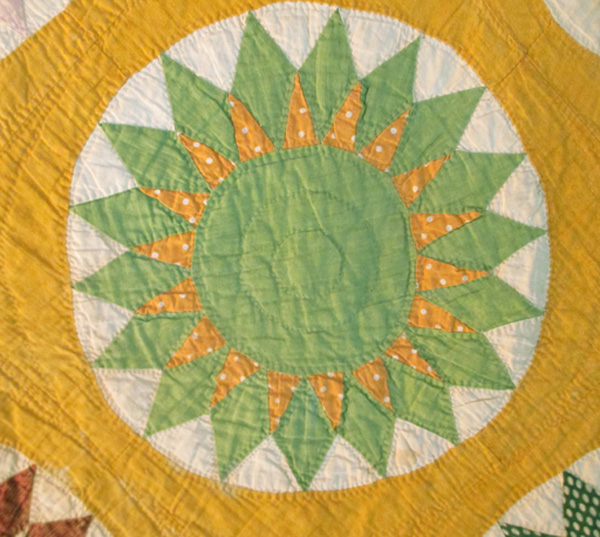
We're back with Flashback Friday featuring Barbara Brackman! We've talked about oranges, blues, and reds, and today we're going to touch on some green hues! Read on to learn more from the master!
Green Calicoes
Quilt
dated 1848
Reproduction
print designers know that applique artists looking to create red and green
masterpieces are on the lookout for greens. Not just any green. We hope to find
a green with a slight yellow cast.
Sunflower
quilt from about 1860
That
classic look came about more by accident than design. Mid-19th-century green
cottons were usually over-dyed -- dyed once with a blue and once with a yellow
dye. Results: medium green. But the blue dye was not so colorfast as the yellow
and a little laundering could shift that green towards yellow. A little more
laundering and the green becomes lime green as the blue dye fades away.
The
mills and the customers just called these prints "Green." Quilters
sometimes call these Poison Green, but the real poison green was a more minty
shade, a single-step green dyed with arsenic -- bad idea!
Well-washed
applique - about 1850
Today's
greens aren't over-dyed and they don't fade away. You can go with a medium
green to echo the quilt just off the frame or a yellow-green to capture a
time-worn look. Check out a few in stock at Fat Quarter Shop that are accurately colored to reflect an old-fashioned look!









Sound like an "American woman" put you in your place!!! By the sounds of your reply I am betting you deserved it... We "American women" should be running this country... It would be a much better place....
ReplyDeleteSew something
Barbara thank you for a great description of these reproduction greens. I makes choosing the right color for the look your trying to achieve a little easier.
ReplyDeleteMight be a bit easier to find this year with the Panetone color of the year- Greenery.
ReplyDeleteWill someone in 100 yrs from now be able to tell the difference between dyes used to reproduce fabric now or those used in the 1800s ?
ReplyDeleteIzzy-that's why you should sign and date your quilts I guess. But I think I would be able to tell after looking at fabric for years. The layers of color will be different, the fabric weave, the surface treatment...
ReplyDelete